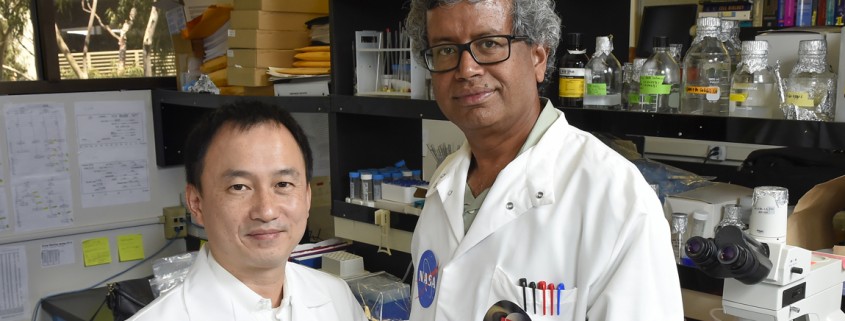USC, NASA send fungi to space for drug research
Researchers at USC and NASA’s Jet Propulsion Lab are working toward observing the growth of fungi in space that could help create useful drugs in the future.
Clay Wang, a professor of pharmacology, pharmaceutical sciences and chemistry at the USC School of Pharmacy and the USC Dornsife College of Letters, Arts and Sciences, said the team wants to examine how the organisms behave in the new environment.
“In this project we’re utilizing the space station to understand how microorganisms, specifically fungi react to space conditions. And we are interested to see whether we can find new drugs from them,” Wang said.
According to studies, the vast majority of molecules that fungi can produce remain undiscovered. The study is specifically based on the fungus Aspergillus nidulans. The space station will be used to understand the growth, gene expression and physiological responses of these organisms and compare them to earth. In most cases, the mechanisms to make these drugs are not turned on, and these organisms make drugs only when they have to. The space condition is used to test how the organisms behave under the stressful environment of the International Space Station.
Fungi have the potential to produce many substances that could be useful for drugs, such as penicillin, but in most cases they are not produced. There is potential to find new molecules produced by these organisms when they grow on the space station.
“We are going study how these microorganisms behave and also its gene expression,” Wang said. “If we can figure out whether they are being made more on the space station and what are the switches to make more, we can repeat that on Earth. Once we know what the genes are, we can genetically modify them on earth so we will be able to make drugs in large amounts and bring down their costs.”
This project originated in NASA’s space biology division and NASA provided the grant to USC. This research mission, called Micro-10, examines the effects of space conditions on fungal cells and seeks to understand the changes in the types of molecules that these cells produce as a response to different conditions.
Kasthuri Venkateswaran, a scientist at NASA’s JPL, was the main collaborator with Wang in this research. Two members of Wang’s research team, Jillian Rohmsdahl and Adriana Blachowicz are graduate students at USC.
Wang stressed how crucial the work of Rohmsdahl and Blachowicz has been to this experiment.
“I think it’s important to highlight the graduate students who are the main drivers on this project and the opportunities here at USC to be able to do things,” Wang said. “It is a very exciting point that School of Pharmacy is now doing space research. It was a very good collaboration with NASA and Dr. Venkat because he gave his expertise, but we at USC gave the pharmaceutical science expertise.”
The samples of the organisms have been provided to NASA by Wang and his team. The first attempt of the space launch of the samples Friday.

